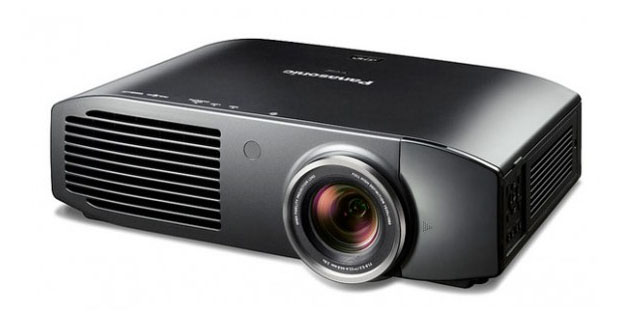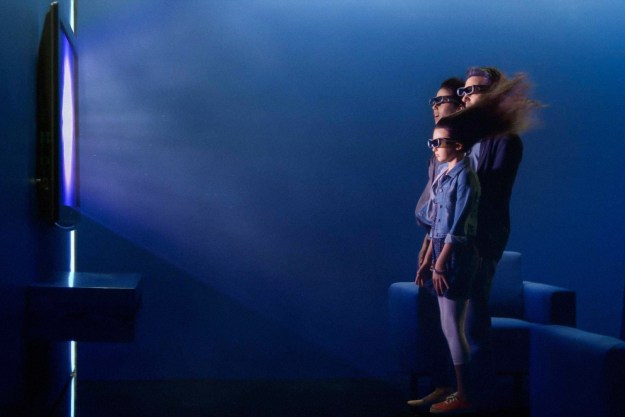
Panasonic Solutions Company has announced its PT-AE7000U home theater projector, the company’s first full HD unit that also handles 3D content. The PT-AE7000U is also the world’s first 3D projector with 480Hz transparent LCD panels, and the unit sports a new optical engine that offers contrast ratios of up to 300,000:1, along with 2D-to-3D conversion modes that processes 2D content with 3D stylish, with five different 3D effects modes.
“The PT-AE7000U’s key 3D projection technologies were developed in collaboration with Panasonic Hollywood Laboratory engineers who are heavily engaged in the authoring and mastering of 3D Blu-ray discs,” said Panasonic Solutions Company direct or projectors and higher education sector Art Rankin, in a statement. “Through this joint effort, the PT-AE7000U has been redesigned from the ground up to achieve higher basic 2D performance and is packed with unique 3D features to deliver studio-grade 3D content to the consumer.”
The PT-AE7000U uses frame sequential technology for 3D images designed to reduce 3D crosstalk and offer smooth 3D viewing. The help with the speedy processing, the system is equipped with a dual-core image processor to help bring out detail and dimensionality. The projector also features 2D-to-3D conversion, enabling consumers to view 2D content as 3D imagery using one of five 3D modes, and a 3D Viewing Monitor and Picture Balance system enables users to be adjusted (within 3D Consortium Committee safety zone limits) to adapt to varying screen sizes. the projector feature six different zoom/focus positions so users can quickly choose settings that match a particular film’s aspect ratio. The projector also automatically switches between 2.35:1 and 16:9 content.
The PT-AE7000U also sports an integrated IR transmitter to sync up 3D shutter glasses (sold separately)—the same glasses work with other Panasonic 3D projectors, and an optional IR transmitter can be connected to extend transmission distance.
For connectivity, the PT-AE7000U sports three HDMI inputs, and the projector sports a 2× zoom, so users can control a throw from as close as about 11 feet to about 24 feet. Vertical and horizontal adjustments mean the projector can be installed near ceilings and walls.
So far, 3D technology hasn’t really caught on with the everyday consumer, but Panasonic probably doesn’t have to worry about that with the PT-AE7000U projector: it’s strictly for the high-end crowd, and will carry a $3,499 suggested price when it lands at resellers in September.
Editors' Recommendations
- You Asked: 3D VR, QDEL technology, and TV size vs. quality
- Samsung, Google are attacking Dolby Atmos’ monopoly on 3D sound, and it’s going to get ugly
- What is MPEG-H? The burgeoning 3D audio standard explained
- This Full HD home theater projector costs less than $150, and it’s fantastic
- Early Prime Day Deal: This Full HD home theater projector is down to just $85


